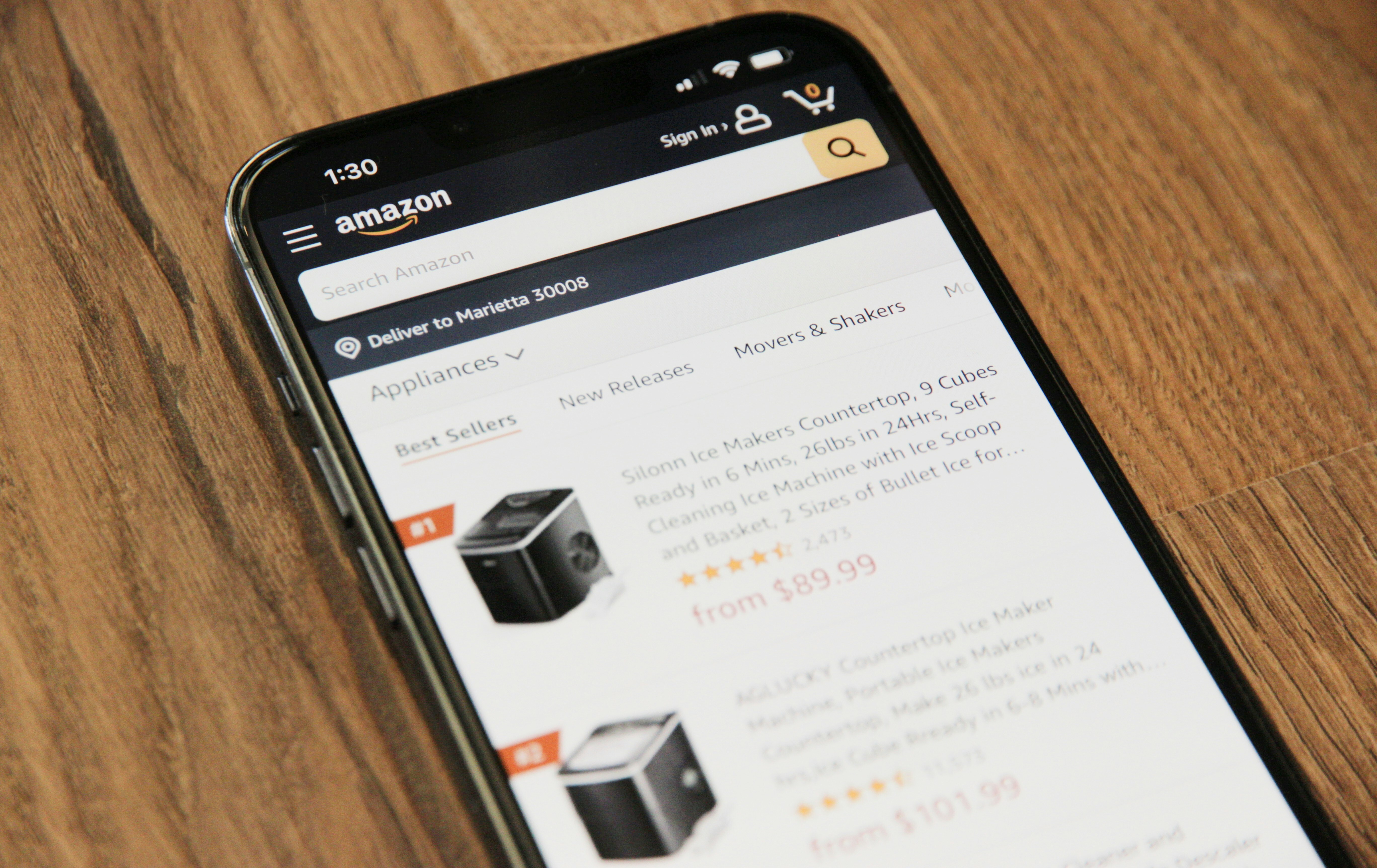Mobile purchases have been on the rise since the dawn of the smartphone era, but have picked up the pace in recent years. In 2018, mobile ecommerce hit $980 billion accounting for 56% of all online purchases. In 2023, mobile ecommerce surpassed $2.2 trillion; 60% of the total ecommerce pie.
As more ecommerce sites and online marketplaces progress from ‘mobile-friendly’ to ‘mobile-first’ design, mobile’s dominance over desktop, PC and tablet is expected to grow. Here’s how you can prepare for the mobile takeover.
The mcommerce takeover in 2024
91% of consumers use smartphones to make purchases with three-quarters (75%) of them preferring to buy via mobile rather than desktop (15%) and tablet (6%). Mobiles also beat PCs in terms of website traffic (60% vs 40%), so why does mobile conversion (2-3% vs 4% for desktops) and mobile cart abandonment (84% vs 72% for desktops) still lag behind their larger cousin? In a word: design.
Consumers that don’t make purchases via mobile listed difficulties with inputting purchase info, visualising items on mobile, performing comparisons on smaller screens and finding the right product as some of the main drawbacks of mcommerce. Anyone that’s tried typing in card details into fiddly forms or flicking between Amazon tabs on a 5’’ screen will understand their pain. But with the move to mobile-first UX that could all change in 2024.
Mobile-first UX
Instead of ‘mobile-friendly’ ecommerce sites, which are designed for desktop and adapted to mobile, 2024 will see the rise of ‘mobile-first’ UX. From fingerprint checkout and one-click payment via digital wallets (i.e. ApplePay) to facial recognition sign-ins and dedicated mobile apps optimised for smaller screens, online retailers are investing in innovative features to cater to their mobile-savvy audience.
This move to mobile-first makes commercial sense. Mobiles are cheaper than desktops and more portable, so mobile-first shopping opens up ecommerce to a wider consumer base anywhere, anytime. But what does this mean for brands selling on online marketplaces?
5 ways to prepare for mobile-first
- Adapt listings to new searches. With 80% of Amazon searches already taking place on mobile, the marketplace giant has decided to roll out an AI-powered search chatbot in 2024 (as part of Project Nile) that provides a better experience for mobile users. The final version of this assistant (the first version was unveiled this month) will likely have voice, keyword and image search, so brands need to adapt their listings to ensure consumers can find their products.
- Make listings mobile-first. Mobile shopping used to be like browsing a catalogue: you scrolled through options on your phone and then bought items later via desktop. But not anymore. From formatting and photo size to accessible info and clearly-stated delivery policies, the whole ‘browsing’ experience now needs to be geared towards closing sales on mobile. Brands will need to review and edit their listings and product images to ensure they’re up to scratch.
- Prepare more stock. The expected increase in mobile conversions is obviously beneficial, but brands still need to be able to fulfil these increased sales. When Starbucks introduced their Mobile Order and Pay app, for example, increased sales caused in-store congestion and longer wait times. The same could happen with marketplace stock, so analyse your marketplace sales and make sure you have enough products ready-to-go in warehouses and fulfilment centres.
- Watch out for different commission rates. With marketplaces investing in their mobile UX, they may pass on that cost to sellers in the form of increased commissions or fees. The ‘Japanese Amazon’ Rakuten, for example, takes 2-4% commission for sales, but levies an additional 0.5% commission for mobile purchases.
- Get mobile marketing sorted. The value of mobile marketing efforts, such as push notifications, will increase in comparison to classic marketplace marketing, such as Amazon’s PPC (which will also likely become more mobile-orientated). Brands need to analyse and adapt their marketing strategy for the mobile-first era.
Get ahead of the curve
Be it a wider consumer base or increased mobile conversions, the move to mobile will provide great opportunities for brands willing to adapt. Those that act early and get ahead of the curve stand to benefit the most.
For more information on how you can prepare, get in touch with Rich Insight.






Blog Comments